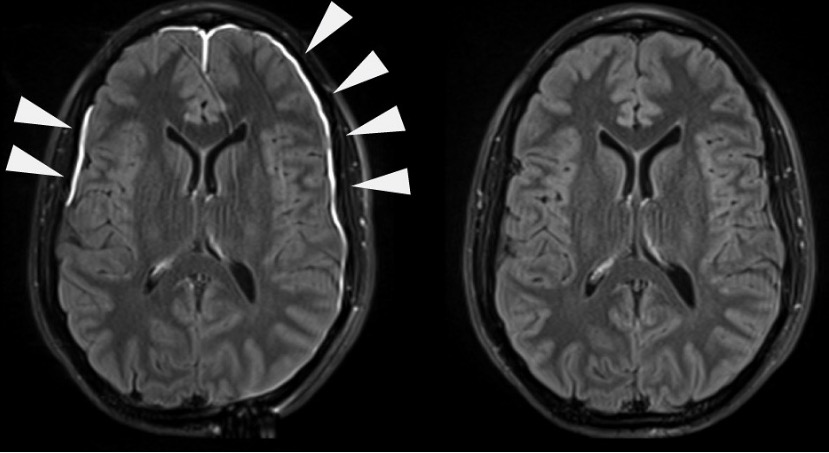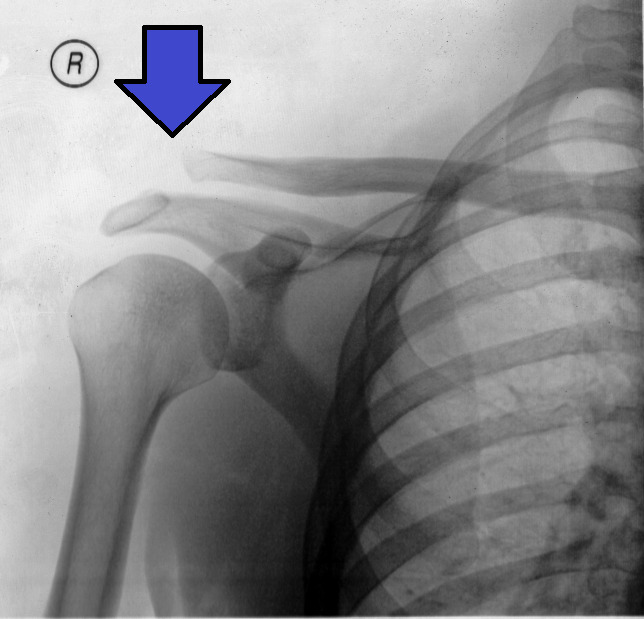Playlist
Show Playlist
Hide Playlist
Patient Introduction and Review of the Shoulder Anatomy
-
Slides Physical Exam Shoulder Pain Introduction.pdf
-
Reference List Physical Examination.pdf
-
Download Lecture Overview
00:01 So now let's look at a case of a patient with shoulder pain. 00:05 This is a 74-year-old man presenting with right shoulder pain after falling on his outstretched arm. 00:11 The pain is constant and he is unable to lift his arm above his head. 00:15 Well, it turns out the shoulder pain is remarkably common. 00:18 16-34% of the general population actually have shoulder pain at some time. 00:24 But similarly to the examples we gave during the introductory course, there's a lot of times where we perform an MRI on people who have no symptoms and will find stuff. 00:34 In fact, 54% of asymptomatic patients over 60 years old have evidence of a partial or a full thickness rotator cuff tear. 00:44 So when we're doing our physical exam, we have to make sure that the findings we get on the exam will actually correlate and necessitate getting any diagnostic imaging. 00:55 With that, a brief review of the anatomy. 00:58 Take note of where the supraspinatus tendon lies. 01:00 This is, of course, a right shoulder. 01:05 The supraspinatus tendon is wrapping around the top of the humeral head, where it inserts very proximally on the humeral head compared with the deltoid muscle, which is basically attached to the clavicle and the acromion and it wraps much further down on the humerus itself. 01:21 And I highlight this because it highlights the fact that the deltoid muscle is really the prominent mover and shaker for getting your arm around and having strength to lift things over your head. 01:31 The supraspinatus, the infraspinatus and the rest of the rotator cuff muscles are designed for stabilizing the humeral head and stabilizing your shoulder joint. 01:42 Also, take note of the glenoid labrum. 01:45 The glenoid fossa, which is the bony part of your scapula, is where the humeral head articulates with the rest of your body. 01:53 The glenoid labrum provides a little bit of extra articulation. 01:57 It's a cartilaginous structure that provides more support on an otherwise fairly unsupported golf ball on golf tee kind of joint. 02:07 Lastly, I'll draw your attention to the subacromial bursa at the top, since this is one of the only parts in the body where muscle is passing between two bones, in this case, the acromion part of the scapula and the humeral head. 02:20 There is some buffering there and the supraspinatus lies right underneath the subacromial bursa so the bursa is providing a little bit of cushioning as the rotator cuff is being moved around in space. 02:36 One last point is that the subacromial bursa is contiguous with the subdeltoid bursa. 02:42 They are the same structure just named differently based on whether you're proximal underneath the acromion or more distal underneath the deltoid muscle. 02:53 Shown here is a posterior view of the shoulder on the left to remind you that the supraspinatus is so named because it is above the spine of the scapula and then the infraspinatus is, of course, beneath it. 03:06 In tandem with the infraspinatus is the teres minor, which has a lot of overlapping functions with the infraspinatus. 03:13 And then on the anterior image shown on the right is the subscapularis muscle, which is the primary driver for internal rotation of the shoulder. 03:25 You can also see here that about 4 centimeters in from the end of the acromion depicted on both the right and left images is the acromioclavicular joint articulating with the clavicle on its way to the sternoclavicular joint. 03:41 So quick review question, which rotator cuff muscles are responsible for external rotation? Well, the supraspinatus lies on top of the humeral head, so that's going to lift your shoulder up or abduction And your subscapularis, I have already mentioned is your primary internal rotator. 04:04 so it's the infraspinatus and the teres minor which have this dual function of doing external rotation. 04:12 So having reviewed the anatomy, I like to think about the different causes of shoulder pain grouped into four main categories. 04:20 The first is capsular disease. 04:22 And that's referring to the actual articulation of the humeral head with the glenoid fossa and the glenoid labrum. 04:28 You can have adhesive capsulitis in that area. 04:31 Simply glenohumeral arthritis, glenohumeral instability, where the humeral head is shifting around too much with that articulation or a labral tear where the glenoid labrum is torn and you, of course, may also have concomitant glenohumeral instability as a result. 04:48 Next up, you have disease of the rotator cuff. 04:50 Maybe it's tendinosis, maybe it's impingement, maybe you have problems with the subacromial or subdeltoid bursa that gets inflamed because there's there's too much stress in that very tight area. 05:03 Calcific tendinitis can occur with those tendons. 05:06 And, of course, you could also have a complete tear. 05:09 In terms of extraarticular structures, that is structures that are related to shoulder movement, but that aren't tied directly to the glenohumeral joint. 05:17 You've got the AC joint. 05:20 The acromioclavicular joint has about 15 degrees of range of motion. 05:24 The biceps tendon, the long head of which inserts into the glenoid labrum. 05:29 And of course, don't forget about neck pathology, which is a common cause of, quote, shoulder pain. 05:35 And lastly, there are, of course, inflammatory and infectious causes of shoulder pain as well. 05:40 Rheumatoid arthritis can affect the AC joints and the sternoclavicular joints, less commonly can affect the glenohumeral joint. 05:48 Septic arthritis, which I've definitely seen. 05:51 And then crystalline arthropathies like gout or CPPD disease can also afflict the shoulder. 06:00 Reviewing these again anatomically, we have capsular disease, which is where the glenohumeral joint is shown here. 06:08 We have rotator cuff pathology, again, involving the subacromial bursa or the various muscles of the rotator cuff. 06:16 Then we have these periarticular structures like the AC joint, the long head of the biceps tendon. 06:22 And that red circle just reminds us of cervical neck disease as well. 06:26 And don't also forget that whenever you're examining one joint where the pain is located, examine the joint above and below. 06:33 In this case, make sure you take a look at the elbows as part of your exam. 06:39 So we're turning to our case, there's a lot of different things to look for here, whether it's rotator cuff tendinopathy or tear and AC joints separation in light of the fact that he fell onto his outstretched arm. 06:50 Maybe he fractured something or maybe it's just biceps tendinopathy. 06:54 Let's move on with looking at the skills required to perform a competent physical exam.
About the Lecture
The lecture Patient Introduction and Review of the Shoulder Anatomy by Stephen Holt, MD, MS is from the course Examination of the Upper Extremities.
Included Quiz Questions
What rotator cuff structure is primarily responsible for the internal rotation of the shoulder?
- Subscapularis
- Infraspinatus
- Teres minor
- Deltoid
- Supraspinatus
Which rotator cuff muscle lifts the shoulder up?
- Supraspinatus
- Subscapularis
- Infraspinatus
- Deltoid
- Teres minor
Which muscle provides strength to lift objects over your head?
- Deltoid
- Infraspinatus
- Teres minor
- Supraspinatus
- Biceps
Customer reviews
5,0 of 5 stars
| 5 Stars |
|
2 |
| 4 Stars |
|
0 |
| 3 Stars |
|
0 |
| 2 Stars |
|
0 |
| 1 Star |
|
0 |
Very good clear explanation. Very good teacher. Very helpfull in teaching my colleques
1 customer review without text
1 user review without text





